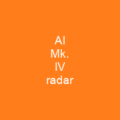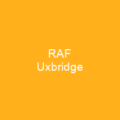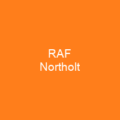IFF Mark II: The Pioneering Friend or Foe System
Imagine a world where identifying friend from foe was as simple as pressing a button, but before that, the challenge was immense. In the early days of World War II, the Royal Air Force faced a daunting task in distinguishing between their own aircraft and enemy planes. Enter IFF Mark II, the first operational identification friend or foe (IFF) system developed by the RAF to address these critical issues.
The Challenges of Early Systems
Earlier systems had their fair share of problems. Amplification issues and sensitivity to only one frequency made them unreliable. These limitations were like trying to navigate a foggy night with a single flashlight; it just wasn’t enough. The Mark II system, however, introduced automatic gain control and a motorized gear system that shifted frequencies through three bands, making it more reliable than its predecessors.
The Need for Improvement
But as new radars were being deployed, the RAF realized they needed something better. The introduction of these new radars required a single-frequency system, leading to the development of IFF Mark III. Known as ‘pip-squeak,’ this existing system was labor-intensive and required multiple operators, causing pilots to be constantly interrupted.
Enter Mark I: A Regenerative Receiver
A new system, known as Mark I, was developed using regeneration to amplify radio signals. This method worked by amplifying the radar signal until it broadcasted back out of the antenna, causing the aircraft’s blip on the radar screen to grow. However, this also led to problems with signal clarity and pilot control.
Production and Implementation
Despite its experimental status, 30 hand-made sets were produced at AMES, and an order for 1,000 was placed with Ferranti in September 1939. A more advanced version, Mark II, was developed to address the growing number of new radar systems being deployed. It used a ‘complicated system of cams and cogs and Geneva mechanisms’ to switch among the bands and tune to specific frequencies, providing a solution to the manual tuning problems caused by the earlier Mark I system.
Mark II: A Step Forward
The Mark II system employed tuned circuits sensitive to many radar sets, allowing it to automatically switch between different frequency bands. To ensure signal strength and prevent squitter, an automatic gain control was added to the IFF system. An order for 1,000 sets was sent to Ferranti in October 1939, with the first 100 sets completed by November.
Limitations and Beyond
The rapid expansion of the RAF precluded widespread adoption of IFF during the Battle of Britain. The lack of IFF led to problems including friendly fire and identification issues. Mark II was rapidly installed in RAF aircraft as the Battle of Britain ended, but it had limitations due to its unreliability.
Mark III: A Comprehensive Solution
Mark III was developed to address the problem of multiple radar frequencies, with a proposed solution involving separate transmitter units at radar stations. Production of the IFF Mark III began at Ferranti and was taken up by Hazeltine in the US. The system remained primary for the Allies until the end of the war and used a common frequency of 176 MHz for years to come.
Versions of IFF Mark III
Mark III had several versions, including:
- Mark I: Prototype version compatible with CH radars
- Mark II: Automatic scanning of three bands covering CH, GL, and Navy Type 79 radar
- Mark IIG: ‘Ground’ version covering common ground-based radars
- Mark IIN: ‘Naval’ version covering Royal Navy radars
- ABE (SCR-535 and SCR-535/A): US version covering US Army radars
- ABK: US version covering US Navy and common ground radars
The development of IFF systems like Mark II and III was a critical step in the evolution of radar technology, ensuring that pilots could identify their allies from their enemies with greater accuracy. These systems were not just about technology; they were about saving lives and winning battles.

In conclusion, the development of IFF systems like Mark II and III was a testament to human ingenuity in the face of war. These systems not only helped in identifying friend from foe but also paved the way for future advancements in radar technology. The journey from the early challenges to the comprehensive solutions of IFF systems is a story of innovation, resilience, and the relentless pursuit of safety in the skies.
You want to know more about IFF Mark II?
This page is based on the article IFF Mark II published in Wikipedia (retrieved on November 29, 2024) and was automatically summarized using artificial intelligence.







